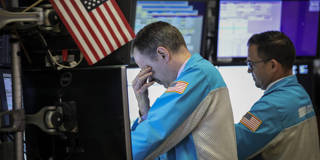Whereas winners tend to outnumber losers when trade is liberalized, raising tariffs normally has the opposite result. US President Donald Trump appears to have engineered a spectacular example of this: his trade war with China has hurt almost every segment of the US economy, and created very few winners.
WASHINGTON, DC – Earlier this month, US President Donald Trump suddenly revealed that a trade agreement between the United States and China was not imminent after all. On the contrary, on May 10, the Trump administration raised its previous 10% tariff on $200 billion worth of Chinese goods to 25%, and threatened to apply the same rate to the remaining $300 billion or so of US imports from China by late June. China then retaliated with reciprocal tariffs on $60 billion worth of US exports, effective June 1. Surprised stock markets fell in response, with the S&P 500 down 4% over the first week of the renewed trade war.
US trade policy is now a hot mess of conflicting goals. Given the current impasse in talks with China, and Trump’s general unpredictability, the inconsistencies of US trade policy – and their costs – are unlikely to go away soon.
For starters, US officials and some prominent economists defend the high US tariffs as a regrettable but temporary expedient, and a necessary means to a strategic end. On this view, the tariffs are a weapon that will enable Trump, the consummate dealmaker, to force concessions from China and America’s other trading partners.

WASHINGTON, DC – Earlier this month, US President Donald Trump suddenly revealed that a trade agreement between the United States and China was not imminent after all. On the contrary, on May 10, the Trump administration raised its previous 10% tariff on $200 billion worth of Chinese goods to 25%, and threatened to apply the same rate to the remaining $300 billion or so of US imports from China by late June. China then retaliated with reciprocal tariffs on $60 billion worth of US exports, effective June 1. Surprised stock markets fell in response, with the S&P 500 down 4% over the first week of the renewed trade war.
US trade policy is now a hot mess of conflicting goals. Given the current impasse in talks with China, and Trump’s general unpredictability, the inconsistencies of US trade policy – and their costs – are unlikely to go away soon.
For starters, US officials and some prominent economists defend the high US tariffs as a regrettable but temporary expedient, and a necessary means to a strategic end. On this view, the tariffs are a weapon that will enable Trump, the consummate dealmaker, to force concessions from China and America’s other trading partners.